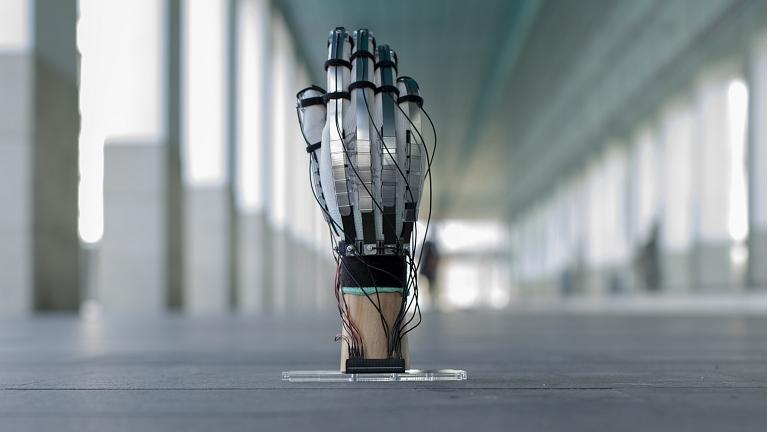TECH
 Ultralight glove generates sensation when touching virtual objects
Ultralight glove generates sensation when touching virtual objects
Haptics
Engineers and software developers around the world are looking to create technologies that allow users to touch, hold, and manipulate virtual objects as if they are actually playing something in the real world.A team from the Federal Polytechnic School of Lausanne (EPFL) and the Swiss Federal Institute of Technology (ETH) in Switzerland have taken a major step towards this goal.They have created a haptic glove that is not only very lightweight - less than 8 grams per finger - but also provides extremely realistic feedback.The glove is capable of generating up to 40 Newtons of sustaining force on each finger by expending only a few milliWatts of power, which means that it can operate on a small battery.Added to its thickness of 2 mm, this translates into a level of precision and freedom of movement not obtained by any previous prototype."We wanted to develop a lightweight device that, unlike existing virtual reality gloves, did not require a bulky exoskeleton, very thick bombs or cables," said researcher Herbert Shea.
Simulated sensation
Named Dextres, the glove is made of nylon with elastic metal strips running through the fingers - the strips are separated by a thin insulation.When the user's fingers come in contact with a virtual object, the controller applies a voltage difference between the metal bands, causing them to join by electrostatic attraction, producing a braking force that tends to retard or block movement of the finger. As soon as the tension is removed, the metal strips slide smoothly and the user can once again move the fingers freely.This simple process allows the drawing in the virtual reality environment to serve as a parameter for controlling the movement of the fingers, simulating the sensation of being touching that specific object.The team now intends to apply the technique to other parts of the body using conductive tissue to amplify the sensations, in addition to trying to reduce the operating voltage, currently at 200 volts - the tiny current however means there is no risk to the user, even in this initial prototype."Video game players are currently the largest market, but there are many other potential applications - especially in the health field, such as in surgeons' training." Technology can also be applied in augmented reality, "said Shea.Source:The Federal Polytechnic School of Lausanne (EPFL) and the Federal Institute of Technology of Zurich (ETH) in Switzerland

No comments:
Post a Comment